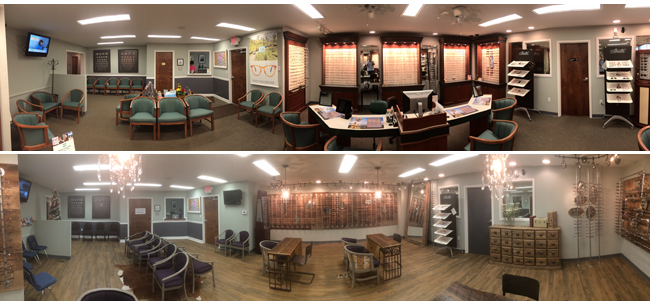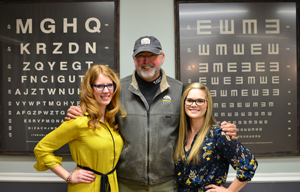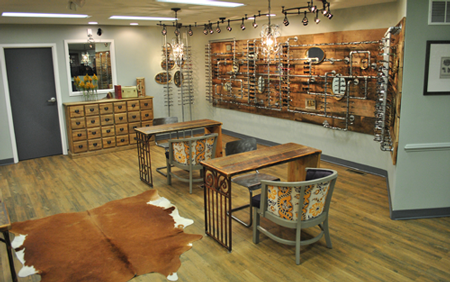

After buying a practice in a small Virginia town a few years ago, Julie Brown, OD, and Shannon Zollinger, OD, knew they wanted to ditch the standard office decor in favor of a rustic design using locally reclaimed materials.
So they did. Gone are the brightly lit white optical displays and laminate-covered dispensing tables. Now there are custom-built tables made of “bourbon wood” from an old distillery, and hand-made optical displays using weathered barn planks, steel pipes and antique nails.
Now that the project is done, it’s hard to say which is more remarkable—that they came up with the idea, or that they got it done in six weeks and under budget.


The reaction so far from patients “has been fantastic,” Dr. Brown says. “They like the material we used. They like the workmanship. We have so many craftsmen in this area and we knew this look would fit, and be timeless.”


The practice, The Eye Site, is in Collinsville, Virginia, near the North Carolina line, a region with a long history of furniture manufacturing. The doctors worked out the design themselves and started the project last fall. It began with tearing down a couple of old barns on a nearby property. That wood was used as backing for the optical displays.
The practice was able to stay open even through the renovation. “The staff was amazing; the employees were a huge help,” Dr. Brown says. Staff members helped with the project work, and they moved the previous optical displays in and out of the way as needed.
The two also came up with the idea for using piping to hold the frames on the optical displays. “Then it was just figuring out what would hold the nose piece. That’s when we came up with the ideas for the nails,” she says.
The task of getting these displays built fell mostly to Dr. Brown’s husband, Frank Manuguerra, and Dr. Zollinger’s husband, Jeff Hook. “Dr. Zollinger and I did most of the designing and that kind of thing but they took down the barn, they got the wood ready and put in all the nails,” Dr. Brown says.


of Black Dog Salvage.
Manuguerra, who is also the practice manager, says that putting in the nails was a lot of work—2,196 holes, done with two drill presses set up behind the practice building. “I went through about two dozen drill bits,” he says. The husbands also custom-built a large mirror, using the barn wood as framing.
The practice’s new design got a lot of attention this summer when it was featured on an episode of Salvage Dawgs, a show on the DIY Network. The company at the center of that show is Black Dog Salvage, based in Roanoke, Virginia, which is about an hour’s drive away. Black Dog made the four dispensing tables, using the bourbon wood and sections of rusted iron fencing.
“They did the tables and we did the rest of it off that theme,” Dr. Brown says. The episode aired on July 26, and Black Dog co-owner Mike Whiteside told viewers, “It takes a little courage to use this old stuff, but the value is a real wow factor when you walk into a place like that.”


The doctors are taking the design concept to another level—they’ve launched a company called Podtical Designs with the goal of “pioneering the change of the optical showroom industry,” as the website says. The goal is to make the same design elements available to other optometric practices looking for something different. “What we did in our optical as far as the design aspects, the geometric piping, the rustic wood, we’re offering that to anyone who wants to try it,” Dr. Brown says.
The two doctors met while attending The Ohio State University School of Optometry, where they both graduated in 2009. They launched their partnership in October 2013, after their respective husbands each found job opportunities in Virginia. So they share a profession and a taste in design too.



